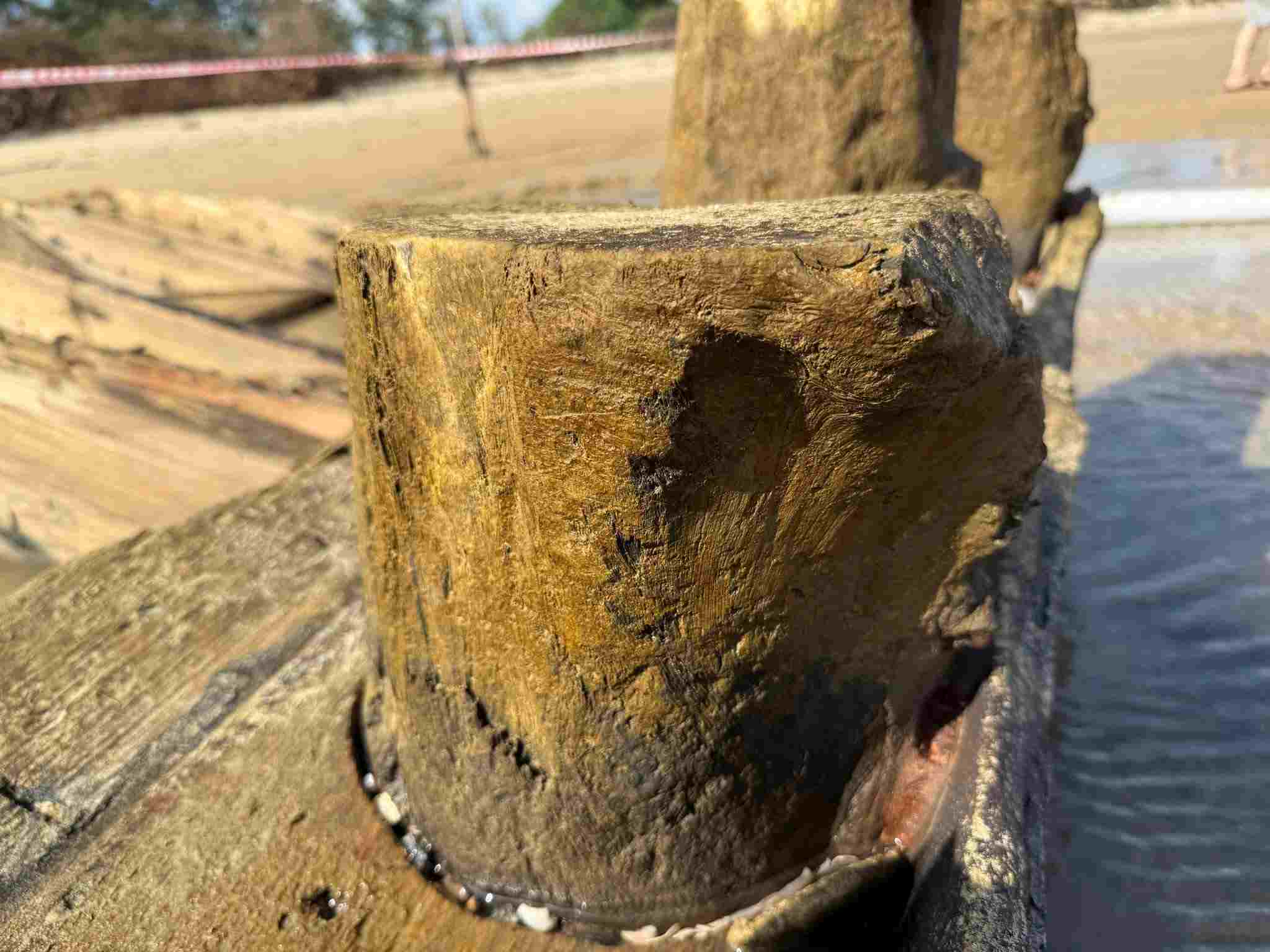Gifts of the past
After a major flood, then followed by storm No. 13 causing strong waves, the frame of a wooden ship appeared on Tan Thanh beach, Hoi An. The Hoi An Tay ward government has organized a protection area for the scene, identifying it as an ancient shipwreck with a length of nearly 16 meters and a width of nearly 5 meters. The Ward People's Committee also propagates and disseminates legal regulations on protecting underwater cultural heritage so that people can join hands to preserve it.
However, every day there are many people, tourists, and curious people coming to watch. Many opinions suggest that the cultural sector needs to take concrete and quick action to protect this special relic.
Observing the scene, many Hoi An residents with historical knowledge and archaeological experience commented: The boat was hand-built, with a sturdy structure, rough walls and thick axes. The wood used was not uniform, with even the trunk being round and curved. This sign shows that the boat builder has taken advantage of all available materials, making them hastily, without fuss.
The bridge of the nose is more than 10 cm thick, while the handlebar is only 4 cm thick - a strange detail, showing calculations for direct or defensive collisions. The boat's hold is small and narrow, only about 8090 cm, not suitable for carrying goods. On the contrary, it shows the purpose of preventing subsidence, bulletproofing, and increasing vitality during combat. The mid-tablets are tightly soaked, thoroughly soaked, and are perfectly waterproof.
The hypothesis given from this data is that this could be a loan shark or an ancient warship. Both have a basis, because the solidity and thickness of the wooden trunks are far superior to conventional merchant ships.
Notably, the boat structure and wood-casting techniques are similar to the model of a South China boat in Quang Dong, not the shape of a Vietnamese boat. Many body sections use pine wood - a type of wood that Vietnamese people rarely use to build boats.
This ancient ship was once discovered
Previously, at the end of 2023, the child's body was discovered naturally - due to landslides. The waves and tides have gradually eroded the sand layer, revealing the boat's frame, deck, and deck about 16 meters long. Experts from the Hoi An Cultural Heritage Conservation Management Center and the Quang Nam Provincial Museum (old) were present, surveying, measuring, and protecting the site.


In a scientific report by the Hoi An Cultural Heritage Conservation Management Center and the University of Social Sciences and Humanities in Ho Chi Minh City, the initial research results were presented: The ship was elaborately crafted, with large iron nails and wooden beams, bonded with iron nails, round body holes, sturdy structure, good wood quality, and preserved quite intact. This area has also discovered many pieces of Chinese purple flower porcelain dating back to the 17th - 18th centuries. Conclusion: This is likely a foreign ship that sank while sailing through Cua Dai sea area.
Local people said that this place used to be garden land, but the eroded sea of hundreds of meters had gradually swallowed up the mainland. Each storm and wave digging deeply, sweeping away sand, exposing wooden structures lying still on the ground. Some people believe that there are still many ancient shipwrecks that have not been discovered in this coastal area.
Currently, the ship is still at the same location. The locality has not yet taken any action to salvage or bring the ship to shore - while the development of coastal erosion is still complicated. The ship's remains may be re- buried as it happened at the end of 2023.
Whether it is warships, seasick ships, or merchant ships, this is still a vivid testament to a Hoi An open port that was formed and flourished from the 15th to the 17th centuries. This discovery is still a gift that the past sent to Hoi An - a heritage city that always knows how to preserve the memories of the ancient port and the ocean.











